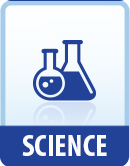|
This section contains 397 words (approx. 2 pages at 300 words per page) |
World of Genetics on Johann Heinrich Matthaei
Heinrich Matthaei conducted experiments in 1961 that revealed the first "word" of the genetic code. In protein synthesis, groups of three DNA bases, called codons, specify which amino acids will be added to a growing popypeptide. A complementary strand of RNA conveys the genetic information to the enzymes of protein synthesis. Working with American biochemist Marshall Nirenberg (1927-), Matthaei showed that the polypeptide poly-phenylalanine is produced when a poly-U RNA molecule is added to a cell-free protein synthesis system. In other words, the RNA triplet UUU codes for a protein molecule consisting solely of the amino acid phenylalanine. They identified the polypeptide product by conducting twenty different experiments, each containing a single radiolabeled amino acid; the one that had contained radiolabled phenylalanine now contained a radiolabeled molecule of higher molecular weight. The technique was quickly adopted by other researchers eager to uncover the relationship between other codons and amino acids. Within seven years of the discovery of Matthaei and Nirenberg, the genetic code was complete.
Matthaei had come to the United States to complete a one-year NATO postdoctoral research fellowship. Having completed a degree in plant physiology at the University of Bonn in 1956, he arrived at the Cornell University laboratory of British-born American botanist Frederick Steward (1904-1993) hoping to conduct research on cell-free protein synthesis. Steward was not encouraging, however, and Matthaei inquired whether he could work with Nirenberg--only recently a postdoctoral fellow himself--at the National Institutes of Health (NIH). Matthaei, a technical wizard, solved many of the methodological problems that had slowed Nirenberg in his attempt to break the code. Nirenberg's and Matthaei's biochemical appraoch to the coding problem contrasted dramatically with the biophysical, mathematical, and cryptoanalytical approaches that had stymied a peculiar group of leading scientists, including British biophysicst Francis Crick (1916-), Russian-born American theoretical physicist George Gamow (1904-1968), and Hungarian-born American physicist Leo Szilard (1898-1964).
Unhappy with working conditions and the distribution of credit at the NIH, Matthaie returned to Germany in 1962. He obtained a position at the Max Plank Institute for Experimental Medicine at Göttingen, where he is now Professor Emeritus. Although he continued to conduct research on protein synthesis, Matthaei soon fell behind in the race to solve the code. Nirenberg, along with the American chemist Robert Holley (1922-1993) and Indian-born American biochemist Har Gobind Khorana (1922-), received the Nobel Prize in 1968 for the interpretation of the genetic code.
|
This section contains 397 words (approx. 2 pages at 300 words per page) |


